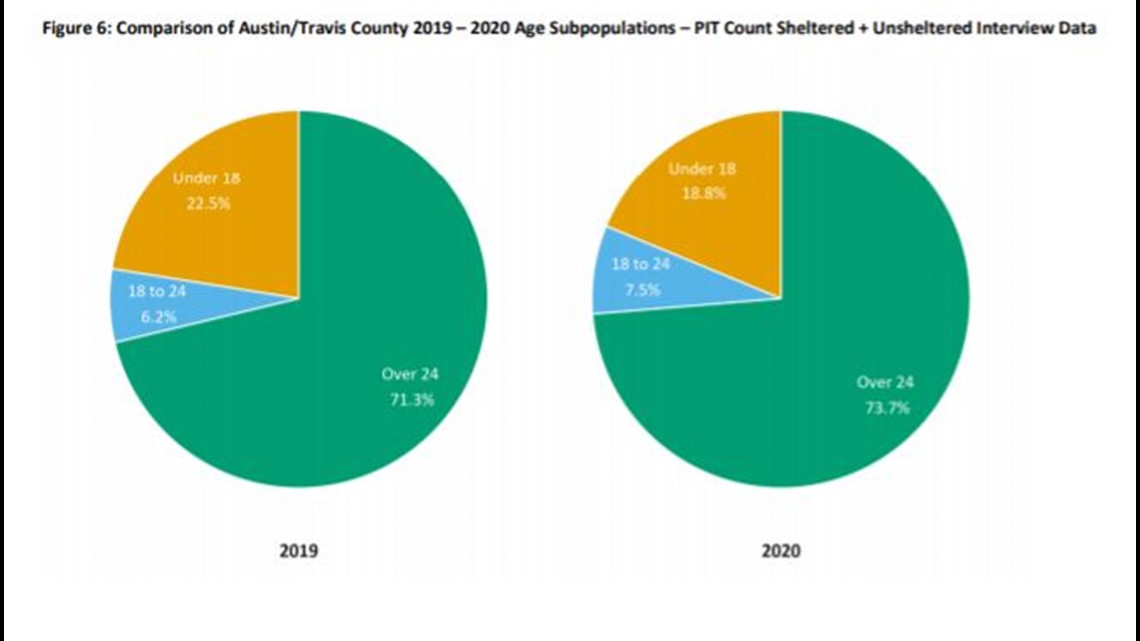AUSTIN, Texas — Results from the 2020 Point-in-Time Count show an 11% increase in Austin-Travis County's homeless population since last year's count.
As for youth homelessness, the 18-to-24-year-old age group increased by 1.3%, while the under-18 age group decreased by 3.7%. "Youth" is defined as anyone who is 24 or younger.
Susan McDowell, the CEO of LifeWorks, said they use a different data set when assessing youth homelessness in Austin and Travis County since the PIT Count is only one night.
"Youth are particularly vulnerable, so they're going to stay safe and hidden at night. So there are some challenges or getting an accurate count in a 24-hour snapshot," said McDowell.
She said they look at the data coming from the Homeless Management Information System (HMIS). It's a shared database that's more comprehensive, giving them a better understanding of homelessness in the area.


"We know that between January of 2019 and January of 2020, we've seen a 28% decrease in youth homelessness," said McDowell. "It's a more accurate data set and certainly one that informs how we're going to tailor and scale our efforts moving forward."
LifeWorks, along with other agencies, set a goal to end youth homelessness in Austin by 2020. If they're successful, Austin would be the first city to make youth homelessness rare, brief and non-recurring.
Since setting the goal in October 2018, LifeWorks and other agencies have housed 490 youth, with 76 of them housed since March.
"So we're really, really proud of these results during what's been a challenging time," said McDowell, of working toward a big goal during a pandemic. "And our goal is to maintain this space because our goal is still absolutely possible."
According to the HMIS data provided by LifeWorks, there are 235 youth still on the "by-name list." These are people LifeWorks knows are in need of housing.
RELATED:
McDowell said it's a matter of continually decreasing the number of youth on the by-name list, while also keeping an eye on any new teenagers or young adults who become homeless each month.
"So, for the last two months, we have housed more youth than have fallen into homelessness. And that's an important benchmark," said McDowell.
She said they didn't have an option to let a pandemic slow them down.
"Our youth have exceptional vulnerabilities medically, economically and emotionally. So not breaking pace with our housing has been our priority during COVID-19," said McDowell. "So we've obviously kept our shelters running, but we've also increased the pace at which we are housing youth."
McDowell said she still believes they'll be able to meet their goal of ending youth homelessness by the end of 2020.
PEOPLE ARE ALSO READING:

